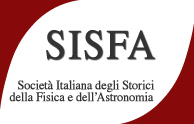Speaker
Description
The 18th century marked the beginning of a widespread diffusion of thermometers and other meteorological instruments, fostering the birth of the first correspondence networks in Europe (including Italy), aimed at collecting and comparing meteorological observations from different sites. An active role was played starting from 1723 by the secretary of the Royal Society, James Jurin, who built one of these networks. Participants were requested to record daily observations concerning temperature, barometric pressure, direction and strength of winds, description of clouds and amount of rain or snow. The Neapolitan Niccolò Cirillo was among Jurin's correspondents; he carried out a variety of observations, ranging from weather conditions and wind directions to rainfalls and the activity of Mount Vesuvius, also including an account on the eruption during March 1730. A handful of original documents from the Royal Society historical archives testifies the activity carried out by Cirillo within Jurin's network, including excerpts of his meteorological diary. The emerging feature is a unifying vision of meteorology, as a comprehensive science including any Earth phenomenon, which was widespread among scientists and naturalists in 18th and 19th century, leading to a common belief of a deep relationship between earthquakes, eruptions and atmospheric phenomena.

